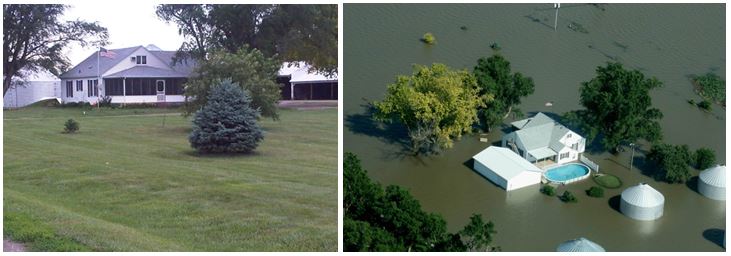From Peru to Missouri: “Adaptation Can Only Go So Far”
 Virginia Ñuñonca Ccallo walks through her fields in the highlands of Peru. Photo: Percy Ramírez / Oxfam America
Virginia Ñuñonca Ccallo walks through her fields in the highlands of Peru. Photo: Percy Ramírez / Oxfam America
Farmers from different hemispheres come together to face the same changing climate.
The drive to Minnesota helped focus my mind. It was May 31, and water was still rushing off of fields inundated with heavy rain.
Rich topsoil muddied the runoff and huge gullies had formed where there were once small slopes and draws. For Minnesota and most of the Midwest, May 31 is almost the last practical date to plant corn with any real chance of a decent yield or even a crop to form before frost. And yet field after field lay soggy and bare.
As I drove, it occurred to me that it was a bit ironic that the farmers living in this landscape – that had been hit by drought, flooding, and increased extreme weather over the past three years – were mostly climate change skeptics.
And it was in this landscape – the home of the Minnesota Twins, Gold Medal Flour, General Mills, and 10,000 lakes – that Oxfam hosted Sra. Virginia Ñuñonca, a small-scale producer from Peru.
Virginia had made the trip outside the high Andean province of Espinar to tell the story of how climate change challenges her livelihood and is creating more poverty and food insecurity for her community. I accompanied her as she came to talk in Minnesota and also Michigan to talk to farmers, students and teachers, food company executives, and a public that often avoids the subject of human-induced climate change.
Virginia lives in a region that relies on water flowing from rivers emerging from glacier and snow melt. Living and growing at an altitude of 13,500 feet, these indigenous farmers have relied for centuries on the glaciers, and a progression of seasons that alternated between rainy and dry, warmth and cold. But Virginia said that since climate change is taking effect, “there is little water, little rain, and spring water is scarce. In the area, there are places where there is no water.”

To adapt, Virginia described an Oxfam-sponsored project that helped her community build a reservoir with canals to better utilize the decreasing river flow. She described how she was now rotating her milk cows on the grass, rather than keeping them in stalls, so that they could help fertilize the land and better preserve the pasture.
But still the changing seasons have not been kind to Virginia’s potato and vegetable production. She and her community are looking at other ways to add value to their production by making cheese and yogurt, and developing other small business alternatives.
In the end though, if the Pastoruri glacier continues to disappear and the weather continues to become more extreme, there will be limits to the community’s ability to adapt. That is why Virginia came to ask food companies and people in the US to do their part to fight climate change and decrease greenhouse gas emissions to mitigate this growing disaster.
One evening, Virginia was joined for an event at the University of Minnesota Institute on the Environment by Missouri farmer and writer, Richard Oswald, who told his story of the impact of climate change. In addition to being a correspondent for DTN Progressive Farmer and the Daily Yonder, Oswald and his son farm 2,500 acres of mostly river bottom land beside the Missouri River.
Oswald told the attendees that his farm had flooded in 1952, 1993, and 2011. In 1952 and 1993, when water topped the levee, “it came in for a week, stayed in place for a week, and then took a week to recede.” According to Richard, that was the way floods had historically occurred. But in 2011, the storyline changed.
All during the winter of that year, the Dakotas and the Rockies in the Missouri River basin received record snow fall, and the Army Corp of Engineers had followed the protocol of past years in their schedule of releasing water below dams on the river. However, this was not a normal year, and when a torrential rain topping 20 inches took place in Montana, the strain on the whole system meant that the floodgates had to be opened and the river was unleashed in Missouri.
“We had experienced leaving our home for three weeks in the past. On June 23, 2011, the levee gave way and the water covered the farm; and July 23 came, then August 23, then September 23. And in late October we returned to our home. The crops were gone, and most of our neighbors never returned. And I attribute this to climate change and what we have to look forward to in the future.”

Like Virginia, Richard has adapted his farming practices to the new reality by eliminating tillage, and increasing crop residue. He has also put solar panels on sheds to generate electricity that doesn’t rely on coal-fired plants.
Both Richard and Virginia told food company representatives, government leaders, and educators that adaptation can only go so far in the face of rising water and dwindling rain. The potatoes and corn won’t grow and the cows can’t be fed when the glacier is gone or when the farm is underwater for four months. Both stressed that we must take immediate and verifiable steps to measure and reduce emissions at all levels of supply chains, production, and personal practices in order to ensure a world where all can be fed and thrive.